Table of Contents
The best way to help The Langley Union grow is simple: share this newsletter. Forward it to a friend, mention it to your family, or post it on social media and encourage others to subscribe.
With voting day on Saturday, October 25, Langley Township residents face a consequential choice among seven candidates vying to fill the council seat vacated by Misty Van Popta.
This comprehensive guide aggregates the extensive candidate survey work conducted by Better Langley and coverage from the Langley Advance Times to provide voters with a complete picture of where each candidate stands on 11 critical issues facing the Township.
I'll say right now that this is not a quick read.
At over 12,000 words, this omnibus guide is designed to be a definitive reference for voters who want to understand the substantive policy differences between candidates on topics ranging from fiscal responsibility and housing development to street safety, water security, and the contentious relationship with Langley City.
Please utilize the table of contents links at the top of the article to jump to various points in the text as needed.
Whether you read it all at once or return to specific sections as you consider your vote, this guide brings together months of reporting and candidate responses into one place.
Seven candidates are running: environmental engineer Resha Sabti, former councillor Blair Whitmarsh, former MP John Aldag, former Langley City mayor Val van den Broek, accessibility advocate Jami Watson, senior community leader Paul Chhina, and business coach Saurabh Seth.
The winner will serve until the October 2026 general election, joining a council where the five-member Progress For Langley majority will remain intact regardless of the outcome.
Better Langley conducted an 11-question survey covering priorities, council collaboration, the Langley City relationship, street safety and walkability, debt and fiscal responsibility, housing variety and development, population growth management, police and fire services, water security, parks and public spaces, and volunteer organizations.
We've aggregated and summarized the candidates' various answers to this survey, and collated them below for your review.
The Langley Advance Times has also provided comprehensive news coverage throughout the campaign, and their reporting has also informed the content in this article.
Advance voting began yesterday and continues through October 22.
General voting day is Saturday, October 25 from 8am to 8pm at nine locations throughout the Township.
Priorities for the Remaining Term
With just over a year left before the 2026 general election, candidates outlined their top priorities:
Resha Sabti:
- Community engagement and consultation with all partners: Sabti wants to expand meaningful engagement so that all partners, not just a select few, are included in decision-making. She emphasizes her independence allows her to work with anyone willing to collaborate.
- Swimming pool development and expanding access to swimming lessons: Supporting the Township in further consultation and evaluation of the best path toward building a community pool, while also engaging with partners such as the school board to ensure more children have access to swimming lessons.
- Safe and sustainable amenities: Advancing smaller but important initiatives like sustainable lighting for tennis courts and other facilities, stronger scooter safety bylaws, and improving road and walkability safety across neighborhoods.
Blair Whitmarsh:
- Balanced and thoughtful growth: With over 24 years living in Langley and two terms on council, Whitmarsh emphasizes he's ready to step up from day one to ensure growth doesn't overwhelm the community or bury it in debt.
- Fiscal responsibility and affordability: Advocating for transparent, collaborative decision-making that protects residents from steep cost increases while maintaining essential services.
- Community wellbeing and safety: Working to ensure residents feel safe and supported through strong community infrastructure and responsive local government.
John Aldag:
- Building a performing arts centre: A priority Aldag has worked on since his time as MP, believing it can showcase local talent and bring performers to Langley so residents don't have to drive to Vancouver or Surrey.
- Replacing Hall 8 in North Langley: The aging facility needs to be replaced and relocated to address health, safety, and functional deficiencies while serving the area's response needs.
- New Willoughby community centre: As the rapidly growing neighborhood matures, Aldag believes it needs a full-scale community centre to serve residents.
- Climate-change actions: Particularly interested in exploring district-energy systems to ensure reliable and affordable heating and electricity for new communities along transit corridors, plus dredging Bedford Channel to restore and maintain this important community asset.
Val van den Broek:
- Exploring creation of a new South of the Fraser Metro Region: Van den Broek believes Langley needs stronger regional voice and better access to regional resources, separate from Metro Vancouver's governance structure. She would produce motions and do research to advance this regional reorganization.
- Transit-oriented developments around SkyTrain stations: Making it easier for families, seniors, and workers to access affordable housing, jobs, and services while reducing traffic congestion and protecting the environment.
- Transit-oriented developments around new rapid bus lines: Extending the TOD approach beyond just SkyTrain to create walkable, mixed-use development along bus rapid transit corridors.
Jami Watson:
- Strengthening local infrastructure and public safety: Watson emphasizes her 27 years at Costco have taught her to navigate challenges and solve problems as part of a team, applying this to ensure infrastructure keeps pace with growth.
- Ensuring growth is matched with schools, parks, and amenities: With only a year left in the term, Watson would focus on building consensus across council to move practical solutions forward on these essentials.
- Supporting affordable and diverse housing: Drawing on her unique perspective as a hard of hearing woman and advocate, Watson wants to ensure housing serves the whole community, not just market interests.
Saurabh Seth:
- Keeping decisions transparent: With limited time in a one-year term, Seth wants people to feel heard and confident their concerns matter, ensuring every decision can withstand rigorous scrutiny.
- Building trust with community groups and Langley City: Drawing on his compliance background, Seth believes rebuilding these fractured relationships is essential for effective governance.
- Making sure every choice benefits residents: Using clear facts and data to guide decisions, supporting proposals that improve community wellbeing while standing against those that don't.
Paul Chhina:
Did not respond to survey
Council Collaboration & Working Style
All responding candidates emphasize independence from the Progress For Langley slate that holds a five-member majority:
Resha Sabti:
- Running as independent "for everyone": Sabti believes both Langleys will benefit from having a voice free of past or present political alliances, stating "I am not running against anyone, I am running for everyone."
- Met with Mayor and most councillors, maintains respectful relationships: Her outreach before the election demonstrates commitment to building working relationships across the council table regardless of political affiliation.
- Independence provides "freedom to listen, engage, and collaborate without pressure": Without obligations to any group or individual, Sabti can ask questions and challenge the status quo when needed while working with anyone willing to collaborate on building the community.
Blair Whitmarsh:
- Approaches each decision asking "What is best for our community?": As an independent candidate with eight years of council experience, Whitmarsh brings his own perspective while remaining committed to collaborating across different viewpoints.
- Committed to collaborating across different viewpoints while maintaining independence: His professional work as a university dean has prepared him to work constructively with diverse perspectives while maintaining focus on what benefits residents.
- Promotes transparency and meaningful public input: Whitmarsh will actively seek input from and listen to residents to ensure Council's actions truly reflect community needs and priorities.
John Aldag:
- Acknowledges power dynamics won't change regardless of byelection outcome: With the Progress For Langley slate holding five seats, the balance of power is not in question, so Aldag takes a pragmatic approach.
- Will act independently while recognizing need to work with governing group: Based on his personal style and past practices in majority and minority governments in Ottawa, Aldag's first inclination would be to collaborate across different perspectives while ultimately acting using independent decision-making.
- Guided by two questions: "Can we afford to do this?" and "Can we afford not to do this?": These questions would consider financial impacts but also the financial costs of deferring investments down the road, including potential opportunity costs to residents.
Val van den Broek:
- Votes on each issue "based on its individual merits": As an independent councillor, van den Broek's vote would be determined by the specific merits of each proposal rather than political allegiance.
- Prioritizes collective problem-solving using evidence and expert advice over political rhetoric: Drawing on her experience as mayor and councillor, she emphasizes focusing on goals and encouraging respectful debate, noting "this is what a healthy democracy is—agreeing to disagree."
Jami Watson:
- Charts independent approach while working collaboratively: Watson's habit as a hard of hearing woman is to chart an independent approach, while her 27 years at Costco have taught her a work ethic built on collaboration.
- Emphasizes listening, building bridges, finding solutions across perspectives: Residents deserve leaders who work across perspectives rather than partisan divides, ensuring every voice has a place at the table.
- Independence allows putting community first while fostering collaboration: Watson believes independence allows her to serve the people of Langley with integrity, transparency, and respect while still fostering strong collaboration to get results.
Saurabh Seth:
- Collaborates with all councillors guided by transparency, accountability, and inclusivity: Drawing on his compliance background, Seth will ensure policies withstand rigorous scrutiny and conflict-of-interest safeguards are in place.
- Evidence-driven decision-making from compliance background: If a proposal improves community wellbeing, Seth will support it; if not, he will stand against it, regardless of who proposes it or political considerations.
Relationship with Langley City
The Township's recent withdrawal from shared agreements with Langley City, particularly the RCMP cost-sharing agreement and Joint Emergency Program, has become one of the most contentious issues in the campaign:
Resha Sabti:
- Uses analogy: neighboring municipalities shouldn't necessarily give equal benefits, but shared services should distribute costs and benefits fairly: Sabti explains through an imaginary scenario with two municipalities called "Riverton" and "Maplewood" that sharing means sharing everything—costs, benefits, risks, and responsibilities—based on clear agreements.
- Supports reasonable discussions and thoughtful evaluation over sudden changes: If agreements are no longer functioning as intended, the two municipalities need to work together to find a fair conclusion, winding down shared services in a way that minimizes impacts on residents.
- Proper considerations must always be applied: What's needed are reasonable discussions, careful listening, and thoughtful evaluation to fully understand the impacts, especially when issues become highly visible and affect public confidence.
Blair Whitmarsh (Strongest Opposition to Separation):
- "I do not support the move to separate RCMP detachments": Whitmarsh takes the clearest position against the split, noting the Township and City have shared a single RCMP detachment since 1993 under a cost-sharing agreement.
- Shared detachments are "more cost-effective and ensures better coordination": From both a financial and logistical perspective, Whitmarsh believes the separation was a mistake that increases overall costs for taxpayers in both communities.
- Opposes charging non-resident "community tariffs" at Township facilities: These fees add unnecessary administrative costs and undermine the spirit of community that connects both Langleys, according to Whitmarsh.
- Open to exploring shared fire services and other joint initiatives: Beyond policing, Whitmarsh wants to look at opportunities for collaboration where it makes sense, believing a renewed spirit of partnership will strengthen both communities' ability to address long-term regional priorities.
- Wants to rebuild trust and strengthen partnerships: His guiding principle is simple: decisions should be based on what best serves residents of both the Township and City, fostering collaboration, efficiency, and community connection rather than division.
John Aldag:
- Had positive working relationships with both municipalities: In his role as MP representing both jurisdictions, Aldag worked effectively with mayors and councils from all three municipalities (City, Township, and Surrey).
- Opposes "a hostile takeover of another jurisdiction": Aldag believes in respectful relationships and is not in support of hostile actions toward the City, though he's open to exploring amalgamation through an open process if residents and all governments agree.
- On policing: supports whatever arrangement delivers best value for Township residents: As an elected official accountable to Township electors, Aldag must ensure Township residents are well-served. If deviating from historical shared policing increases safety and livability, he could support it; if the status quo is most cost-efficient, he'd suggest "not fixing something that isn't broken."
Val van den Broek (Strongest Support for Separation):
- "Ending the shared policing model with the City was necessary": Van den Broek takes the strongest position in favor of the split, arguing it was needed to address Township-specific needs and ensure residents' tax dollars weren't subsidizing the City.
- City "has done nothing over the years to become fully independent": She lists missing infrastructure: no high school, no indoor swimming facility, no hospital, no large theatre or auditorium (they rely on the Langley Events Centre), and no RCMP detachment (in 2014 Council gave the only City RCMP position to the Township).
- Questions why Township taxpayers should subsidize the City: Van den Broek asks "Why should Township taxpayers have their infrastructure used sooner? Why doesn't the City have agreements with Surrey? They are neighbours."
- Fire services are different and should continue collaboration: She notes fire services are an entirely different service and situation, with Surrey and the City helping with massive fires because of provincial mandates, and sees no issues there as long as staffing, gear, and support keep pace with population growth.
Jami Watson:
- "Langley Township and Langley City are stronger when we work together": Watson takes a clear position that shared services like policing, fire, and emergency management provide efficiency, safety, and consistency for residents across both communities.
- Shared services provide efficiency, safety, and consistency: While fairness in cost-sharing is important, Watson believes collaboration should guide decisions, not division.
- Supports collaboration over division: Building respectful partnerships with the City ensures both communities reduce duplication, keep services affordable, and focus on what matters most: the safety and wellbeing of all Langley residents. She cites the relationship between Port Moody, Port Coquitlam, and Coquitlam as an example of cities being stronger together.
Saurabh Seth:
- Calls separation "a step backward": Seth takes a strong position that ending the Joint Emergency Program and RCMP cost-sharing agreement was the wrong move.
- RCMP itself warned moves could create inefficiencies: The police service raised concerns that fragmenting policing risks duplication, higher costs, and could actually increase the tax burden while undermining trust with Langley City.
- Maintaining shared services with oversight is fiscally responsible: Seth's approach rests on four principles: public safety first (emergencies and crime cross borders), transparency and accountability (changes need clear business cases), fairness to taxpayers (costs and benefits shared equitably), and respectful collaboration (negotiations should build trust, not division).
- Seen "no evidence" withdrawals save money once long-term impacts considered: He's examined the financial projections and believes maintaining shared services with proper oversight is both fiscally responsible and better for residents on both sides of the border.
Street Safety & Walkability
Langley consistently ranks high for vehicle collisions and has been shaped by auto-centric planning that leaves many neighborhoods without safe walking or cycling options:
Resha Sabti:
- Shares personal experience with close calls while walking with dogs and twin boys: Sabti's lived experience includes more close calls with cars than she'd like to admit, sometimes involving friends and neighbors who are careful drivers themselves.
- Need to "re-evaluate how we approach walkability and safety": This isn't about blaming individuals; it highlights the need to reconsider community planning and street design. These experiences have left her genuinely concerned, and she knows many others share the same worries.
- Proper planning, neighborhood engagement, learning from other cities: The solution requires proper planning and the discipline to follow through, strong engagement with neighborhoods so efforts are coordinated and costs managed wisely, and learning from other cities that have achieved safer, more sustainable streets to adapt best practices to Langley.
Blair Whitmarsh:
- Expand and connect sidewalks, trails, cycling routes while maintaining horse trails: To make Langley safer and more walkable, Whitmarsh wants to expand and connect the network of sidewalks, walking paths, multi-use trails, and cycling routes throughout the community.
- Replace "maze gates (baffle gates)" with bollards for better accessibility: A specific, practical solution to make it easier for cyclists, parents with strollers, and people with disabilities to navigate safely and comfortably through trail entrances and road crossings.
- Design "public spaces that prioritize people over cars": Sidewalks must be well lit, properly maintained, and include safe, accessible crossings at busy roads. By prioritizing people over cars in design, the Township can reduce traffic dangers, improve accessibility, and create healthier, more connected neighborhoods.
John Aldag:
- Avoid repeating past mistakes in new communities: Aldag emphasizes the huge opportunity to create liveable, walkable communities in new developments, ensuring they don't repeat the auto-centric planning mistakes of areas like Willoughby.
- Create "liveable, walkable communities" with core services accessible through affordable transit: New communities should offer core services in the immediate neighborhood or accessible through affordable and reliable transit options.
- Admits he doesn't know specific solutions "off the top of my head": In a refreshingly honest response, Aldag acknowledges he doesn't have all the answers but is committed to learning from experts.
- Would "start with a sit-down with experts including representatives from A Better Langley": He's sure solutions exist and wants to explore what options other communities have found to add alternative transportation options at reasonable costs, explicitly mentioning Better Langley as one resource he'd consult.
Val van den Broek (Most Comprehensive Response):
- Build connected cycling networks rather than isolated bike lanes: Instead of creating isolated bike lanes that don't connect to destinations, van den Broek wants to focus on building a cohesive network of protected, all-ages-and-abilities cycling routes that connect where people need to go: schools, parks, commercial centers, and future SkyTrain stations.
- Adopt complete streets policies for all users: She wants the Township to adopt a "complete streets" policy ensuring all major roadway projects are designed for all users, citing the ongoing 216 Street Complete Street Project as a good example.
- Leverage SkyTrain expansion for walkable mixed-use communities: Ensure new developments and upgrades around the SkyTrain extension are planned as walkable, mixed-use, transit-oriented communities with widened sidewalks, added green space, and high-quality public gathering spaces.
- Expand CPTED-friendly off-street paths: Promote Crime Prevention Through Environmental Design principles in expanding and connecting Langley's multi-use path network along greenways, utility corridors, and waterfronts to provide safe routes away from high-traffic roads.
- Shift from car-dependent sprawl to "Smarter Growth" with compact neighborhoods: Address the auto-centric mindset by shifting development patterns toward compact, mixed-use neighborhoods rather than perpetuating fragmented, car-dependent sprawl.
Jami Watson:
- Cycling was main transportation but bike "sits in the corner collecting dust" because Langley doesn't feel safe: Watson's passionate personal testimony reveals the reality many residents face: she's always been an avid cyclist, but since moving to Langley, her bike collects dust because as a hard of hearing woman, cycling here doesn't feel safe.
- Prioritize traffic calming, better crosswalks, connected trails: Langley's growth requires safer, more people-friendly streets through traffic calming in neighborhoods, improved crosswalk infrastructure, and connected trails and sidewalks.
- Support "15 minute city" concept where residents access everything within 15 minutes: Watson sees this concept as very important—the ability to get everything you need within 15 minutes promotes a healthier, more sustainable, and socially connected community while reducing car dependency. When cyclists and pedestrians can travel safely, it means fewer cars on the road.
Saurabh Seth:
- Emergency safety audits at high-crash intersections: Addressing Langley's traffic safety crisis requires immediate action starting with conducting emergency safety audits at high-crash intersections and installing quick-build measures like protected left turns and enhanced lighting.
- Protected bike lanes and traffic calming on dangerous corridors: Review the design of dangerous corridors to add protected bike lanes and implement traffic calming measures that slow vehicle speeds.
- Speed humps in residential areas: Expand traffic calming measures in residential areas using speed humps and intersection improvements to protect neighborhoods from speeding traffic.
- Connected cycling networks linking homes to schools, transit, shopping: Build connected cycling networks that allow people to get from homes to schools, transit, and shopping without being forced onto busy arterials.
- Dedicated annual safety budget: Establish a dedicated annual safety budget to guarantee consistent progress on improvements rather than treating safety as an afterthought.
Debt & Fiscal Responsibility
The Township has taken on significant debt in recent years, with over $600 million committed or planned, often to fund large destination projects:
Resha Sabti:
- Acknowledges significant debt from years of growth outpacing infrastructure: Sabti recognizes the Township carries significant debt and much of it stems from years of unmatched growth where infrastructure simply didn't keep pace with development.
- Shares personal story about improved commute times after road upgrades: Living in Walnut Grove, she used to spend nearly an hour commuting to her workout facility. As a mother of twin young boys, the gridlock and delays eventually forced her to stop going. Today, thanks to upgraded roads, she can finally get back to her gym—a reminder of how proper investment makes a real difference in people's lives.
- "New development must come with proper planning, fiscal responsibility, and genuine give-back": Moving forward, new development can't just be approved—infrastructure must be built alongside it, commitments must be honored, and every part of development must deliver on its promises to residents without placing unnecessary financial burdens on taxpayers.
Blair Whitmarsh (Strongest Warning):
- "The Township's debt has grown dramatically since 2022": Whitmarsh sounds the alarm most strongly among candidates, noting the rapid growth in borrowing under the current council.
- "$600 million already committed or planned. This level of borrowing is not sustainable": He warns this dramatic debt level will directly affect the cost of living for residents in the years ahead and is simply not sustainable for the long term.
- Major projects need significant community input and full transparency about long-term impacts: Whitmarsh believes major projects should only move forward when residents understand how today's decisions will affect future tax rates and service levels, not proceeding without community awareness of the consequences.
- Must protect affordability and support vulnerable residents: By carefully prioritizing investments, moderating debt levels, and maintaining flexibility to respond to unexpected needs, the Township can build required infrastructure while protecting affordability and ensuring support for the most vulnerable residents.
John Aldag:
- Wants to "fully understand the financial state" before making judgments: Taking a measured approach, Aldag acknowledges he needs to fully understand the Township's financial state before making definitive statements.
- Heard various perspectives on the debt issue: He's heard different perspectives on how projects are being financed and what the implications are for taxpayers, recognizing this is a complex issue with multiple viewpoints.
- His priorities include performing arts centre, new Hall 8, new Willoughby community centre: Despite debt concerns, Aldag's list of infrastructure priorities remains focused on major community assets based on discussions with Township residents.
- Destination assets should contribute economically to community: He argues his priorities would serve local residents, and facilities like the performing arts centre, like any destination asset, should contribute economically to the community, helping offset their costs.
Val van den Broek (Most Detailed Recommendations):
- Establish and adhere to debt management policy: Van den Broek recommends establishing clear, prudent limits on debt as a percentage of own-source revenue, ensuring debt is used strategically for capital projects with long lifespans rather than operational costs. The 2025 Capital Budget mentions an estimated borrowing limit based on factors like amortization and interest rates.
- Improve transparency on borrowing purpose and repayment: Provide clearer, more accessible information to the public about the purpose of borrowing, how debt is being repaid, and the specific interest and operating costs associated with new projects to build public trust.
- Prioritize maintenance and renewal of existing infrastructure: Dedicate a consistent portion of the budget to maintaining and renewing existing infrastructure in older neighborhoods rather than focusing exclusively on new facilities. This helps address the "illusion of wealth" that results from neglecting existing assets for new development.
- Explore alternative financing like public-private partnerships: Investigate models that can help distribute risk and upfront costs while ensuring public benefit, reducing the debt burden on taxpayers.
- Conduct comprehensive needs assessments before major projects: Before committing to a major destination project, conduct thorough community needs assessments to ensure the project aligns with the most pressing priorities of residents, such as local parks, trails, and road improvements.
- Empower residents in priority setting: Strengthen public engagement processes to give residents a real voice in setting capital budget priorities, ensuring investment reflects community-wide needs rather than special interests.
Jami Watson:
- Borrowing can help but "must be approached responsibly": Watson takes a pragmatic view that borrowing isn't inherently bad but must be done thoughtfully and strategically.
- Prioritize investments improving daily life before large destination projects: She believes the Township should prioritize investments that directly improve residents' daily life—like local parks, infrastructure, and safety—before taking on debt for large destination projects.
- Debt should remain sustainable with clear benefits and repayment plans: Any borrowing should be approached with clear benefits to the community and a solid plan for repayment, ensuring fiscal responsibility means balancing ambition with practicality so today's borrowing doesn't burden tomorrow's taxpayers.
Saurabh Seth:
- Transparency through public dashboard detailing funding, debt schedules, tax impacts: Seth wants to create a public-facing dashboard that details funding sources, debt schedules, and tax impacts so residents understand exactly where their money is going and what they're paying for.
- Prioritization framework weighing essential infrastructure against destination amenities: Balancing large-scale initiatives with neighbourhood needs requires a clear framework that weighs essential infrastructure like roads, sidewalks, and parks against destination amenities, phasing projects based on long-term value and revenue potential.
- Community engagement with clear metrics and feedback opportunities: Frequent updates with clear metrics and opportunities for feedback ensure residents stay informed and have input on major financial decisions.
- Borrowing within sustainable limits: Equity and prudence require fair distribution of investments across all neighborhoods and borrowing only within sustainable limits that don't threaten the Township's long-term financial health.
Housing Variety & Development
Langley faces intense development pressure and growing demand for more affordable, diverse housing options, particularly around transit corridors like the SkyTrain extension:
Resha Sabti:
- Ensure developments provide real choices including accessible housing for seniors: This complex question requires ensuring new developments are balanced and provide residents with real choices. For example, developments should include housing designed for seniors with accessible features that support mobility and other needs, allowing older adults to live with dignity and respect in their own homes.
- "Well-designed, data-driven master plan" guiding growth: Developments should be guided by a well-designed, data-driven master plan that ensures growth serves the best interests of the community while giving back to it. Affordability must also be built in through existing policies and bylaws or by advocating to higher levels of government.
- Reasonable, transparent, efficient development processes that don't drag on for years: The development process must be reasonable, transparent, and efficient—approved in a cost-effective, sustainable, and resilient manner on a reasonable timeline. Projects that drag on for years can easily increase costs due to factors such as tariffs or other unforeseen obstacles. Setting clear timelines helps manage risks and ensures the community receives the benefits of development when needed most.
Blair Whitmarsh:
- "More creative and balanced approach" needed: Langley needs to move beyond its traditional development patterns and embrace a more creative and balanced approach to housing that serves the whole community.
- Support rowhouses, laneway homes, secondary suites, small-scale multi-unit housing: While single-family developments will continue to be important, Whitmarsh wants to embrace options such as rowhouses, laneway homes, family or caretaker suites, secondary suites, and small-scale multi-unit housing. These models provide more affordable entry points for young families, create downsizing opportunities for seniors, and offer attainable housing for people being priced out of the market, all while maintaining community character.
- Around SkyTrain: careful planning for "vibrant, walkable neighborhoods": Around the new SkyTrain extension, careful planning is essential. Transit-oriented development should optimize land use to create vibrant, walkable neighborhoods.
- Integrate housing, shops, services, public spaces: TODs should integrate housing, shops, services, and public spaces rather than being solely residential towers.
- Require mix of housing types including affordable and rental units: By requiring a mix of housing types, including affordable and rental units, and prioritizing livability, the Township can ensure these corridors don't become exclusive enclaves but instead reflect the diversity of Langley. Balancing developer interests with community needs means setting clear expectations: growth must contribute to affordability, livability, and long-term sustainability.
John Aldag:
- Diversify beyond current options: co-op housing, rent-to-own, purpose-built rental: The continued densification along transit corridors is key, but Aldag emphasizes the Township can't keep building only the types of accommodations currently seen in the community. Many additional housing options exist and should be pursued, including coop housing, rent-to-own housing, and purpose-built rental housing for at-market and below-market rates.
- Include additional care residences for seniors: The community also needs more options for seniors, including additional care residences for an aging population with complex healthcare needs.
- Create neighborhoods "that don't require getting in a vehicle to survive": All these issues should be worked on in conjunction with provincial and federal governments. Aldag wants to see the Township develop sustainable, liveable neighborhoods where residents don't need a car for daily needs.
- Particularly interested in district energy systems: He's particularly interested in district energy systems to help ensure reliable and affordable heating and electricity for new communities along transit corridors, providing an alternative to individual heating systems in each building.
Val van den Broek (Most Comprehensive TOD Response):
- Design guidelines emphasizing walkability and human-scale design: To ensure new housing in transit areas contributes to long-term livability, van den Broek wants to establish clear design guidelines for new developments that emphasize walkability, human-scale design, and high-quality public spaces.
- Mix of residential, commercial, and service uses within TOAs: Encourage a mix of residential, commercial, and service uses within Transit-Oriented Areas to create vibrant, self-sufficient communities where residents can live, work, and shop without relying on a car.
- Prioritize cycling and walking infrastructure: Prioritize investments in cycling and walking infrastructure to provide convenient and safe alternatives to driving, making transit areas truly accessible without a vehicle.
- Seamlessly integrate with existing neighborhoods: Plan and design new development to seamlessly integrate with existing neighborhoods, providing high-quality amenities and enhancing connectivity rather than creating isolated high-density islands.
- Continue partnership with BC Builds and federal co-op housing programs: The Township should continue to partner with the province to access funding and expertise for affordable housing. Recent projects funded by the BC Builds program have secured below-market rentals in both Aldergrove and Willoughby. Also continue to partner and advocate with the federal government for co-op housing.
Jami Watson:
- Hold developers accountable to deliver diverse housing: Langley's housing strategy must balance growth with affordability and livability. Watson supports holding developers accountable to deliver diverse housing options, from family-sized units to seniors' housing.
- Ensure new builds include affordability requirements: The Township needs to ensure new builds include affordability requirements built into development approvals, not relying solely on market forces.
- Around SkyTrain: "complete communities with housing, parks, schools, and services built together": Around the SkyTrain extension, planning must create complete communities where housing, parks, schools, and services are built together, not in isolation. Development should serve the whole community, not just the market, so that young families, seniors, and those struggling to find housing have real options in Langley.
Saurabh Seth:
- Reference existing frameworks: Housing Action Plan, Official Community Plan, 200 Street 2040 Corridor Plan: Seth notes Langley has strong planning frameworks already in place, including the Housing Action Plan, Official Community Plan, and the 200 Street 2040 Corridor Plan, which is currently in consultation.
- Focus on gathering resident input and engaging with developers: In his one-year term, Seth would focus on gathering input from residents and engaging with developers to ensure growth aligns with community needs.
- Ensure transparency, accountability, and housing diversity requirements met: While major policy changes take time, he can help ensure transparency, accountability, and that current developments meet Township requirements for housing diversity, livability, and affordability. His goal is to give residents a clear voice in planning decisions, support practical improvements, and lay the groundwork for the long-term success of these plans so that when policies are finalized, they truly reflect the community's priorities.
Population Growth Management
Langley is one of the fastest-growing communities in BC, bringing intense pressure on housing, transportation, schools, and community infrastructure:
Resha Sabti:
- Most urgent: "making sure that growth is matched with the infrastructure and services our community depends on": As a longtime Langley resident, parent, and community advocate, Sabti has seen firsthand how rapid growth pressures housing, schools, transportation, and everyday quality of life. The most urgent challenge is ensuring growth is matched with infrastructure and services, not just today but for the long term.
- Evidence-based decisions, stronger engagement, fiscal responsibility, resilient planning: This means making evidence-based decisions that use the infrastructure and expertise already available while planning for future needs. New housing developments must be paired with schools that reduce reliance on portables, transportation networks that are safe and walkable, and affordable recreation amenities like swimming pools, running tracks, and fields that reflect the size of the growing population.
- Learn from other cities with similar growth patterns: Sabti would prioritize stronger engagement with all partners (residents, school board, community organizations, and businesses), fiscal responsibility in evaluating data and costs carefully, and resilient planning that learns from other cities, embeds emergency preparedness, and includes overlooked areas like animal welfare and scooter safety.
Blair Whitmarsh:
- Challenges are "deeply interconnected" requiring coordinated action: Langley's rapid growth impacts every aspect of the community, from housing and transportation to schools, healthcare, and community infrastructure. Whitmarsh emphasizes these challenges are deeply interconnected, and solutions require coordinated action across multiple fronts.
- Most urgent priorities: housing and transportation: While all areas are critical, Whitmarsh believes housing and transportation are the most urgent challenges right now, as addressing these two areas will have the most immediate and visible impact on residents' daily lives while laying the foundation for balanced, sustainable growth.
- These have "most immediate and visible impact on residents' daily lives": To keep pace, the Township must ensure enough housing is built to meet demand while improving roadways and investing in alternate forms of transportation so residents have real options. The Township must work closely with the school board to expand capacity and build new schools, continue pressing the provincial government for improved healthcare services including a modern hospital, and prioritize community infrastructure like parks, recreation facilities, and gathering spaces to maintain livability.
John Aldag:
- Biggest challenge: working effectively with higher levels of government: The reality is that Langley is a truly desirable location that will continue to attract new residents, and provincial growth mandates are at play. For Aldag, the biggest challenge becomes how to work effectively with higher levels of government, particularly the province, to ensure areas under their control like healthcare and education meet residents' needs.
- Pressure on Langley Memorial Hospital (need new tower and expanded services): One of the biggest concerns Aldag hears relates to timely access to healthcare, particularly at Langley Memorial Hospital. This isn't a criticism of the exceptional medical professionals who work there, but criticism that the size of hospital and types of services offered simply don't meet today's needs. Pressure needs to be maintained on BC to deliver on commitments made to the community including a new tower at LMH
John Aldag:
- Biggest challenge: working effectively with higher levels of government: The reality is that Langley is a truly desirable location that will continue to attract new residents, and provincial growth mandates are at play. For Aldag, the biggest challenge becomes how to work effectively with higher levels of government, particularly the province, to ensure areas under their control like healthcare and education meet residents' needs.
- Pressure on Langley Memorial Hospital (need new tower and expanded services): One of the biggest concerns Aldag hears relates to timely access to healthcare, particularly at Langley Memorial Hospital. This isn't a criticism of the exceptional medical professionals who work there, but criticism that the size of hospital and types of services offered simply don't meet today's needs. Pressure needs to be maintained on BC to deliver on commitments made to the community including a new tower at LMH and expansion of services accessible locally.
- Ensure schools built where the community develops: The Township needs to ensure schools are built in areas where the community is developing, which requires effective relationships with other levels of government and partners including the Langley School District.
Val van den Broek (Most Detailed Response):
- Most urgent: "mismatch between housing and supporting infrastructure, especially schools and transportation": Based on recent reports and public discourse, van den Broek identifies the fundamental imbalance between housing development and supporting infrastructure as the most urgent challenge. The issue is particularly acute in developing areas like Willoughby, where thousands of new homes are being built but roads are congested and schools are severely overcrowded.
- Strategic phasing tying housing development to infrastructure completion: Addressing this requires implementing and rigorously enforcing development phasing policies, like the one recently adopted for Willoughby, that tie the pace of new housing development directly to the completion of key infrastructure projects like new schools, major road upgrades, and utility capacity improvements.
- Fund infrastructure upfront through ACCs and grants: Continue to use and potentially expand mechanisms like Amenity Cost Charges to ensure developers contribute equitably to the cost of community amenities. The Township should also actively pursue grants from provincial and federal governments to secure additional funding for major infrastructure.
- Improve transportation networks and leverage SkyTrain expansion: Invest in a transportation network that moves people efficiently, not just cars, including completing major road networks, expanding dedicated bus lanes, and developing safe, connected cycling and walking pathways. Maximize the impact of the upcoming SkyTrain extension by building walkable, mixed-use communities around stations.
- Plan for social infrastructure including community centers, libraries: Go beyond roads and pipes by dedicating resources to community and social infrastructure, as identified in strategies like the Township's Social Sustainability Strategy. This includes securing land for future community centers, libraries, and public gathering spaces, along with increased investments in parks, trails, and recreational facilities to maintain residents' quality of life as density increases.
Jami Watson:
- Infrastructure strain most urgent (roads, schools, amenities not keeping pace): Watson identifies infrastructure strain as the most urgent challenge from rapid growth, noting that roads, schools, and community amenities are not keeping pace with development.
- Stronger coordination with province and school district: She believes growth must be planned with people in mind, ensuring housing is supported by transportation options, schools, parks, and essential services.
- "Services first" approach so development enhances rather than overwhelms: Watson would push for stronger coordination with the province and school district, smarter transportation planning, and a "services first" approach so that new development enhances rather than overwhelms community livability.
Saurabh Seth:
- Phase new housing with clear timelines and budgets for fire halls, RCMP, roads, parks, schools: Langley's rapid growth is exciting but brings serious pressure on healthcare, policing, fire protection, schools, transportation, and community infrastructure. The most urgent challenge is making sure essential services expand in step with new development so the Township is never playing catch-up.
- Study creative healthcare solutions like Colwood's municipally supported clinic: Seth emphasizes the need to plan and fund growth and services together, meaning phasing new housing with clear timelines and budgets for fire halls, RCMP staffing, road and transit upgrades, parks, and schools. Healthcare is especially strained, so the Township must think creatively. For example, the City of Colwood has launched a municipally supported clinic with city-employed physicians. Seth isn't saying that exact model is right for Langley, but the Township should study bold ideas alongside traditional provincial and regional partnerships.
- Plan and fund growth and services together: Rather than letting development race ahead and trying to catch up with services later, Seth wants simultaneous planning and funding for both housing and the essential services that support it.
Police & Fire Services
Candidates were asked about investments needed to keep pace with growth and whether they agree with current Council's direction:
Resha Sabti:
- Shares story of friend's son who moved to Alberta to pursue firefighter career: A close friend once shared with Sabti how her son, who dreamed of becoming a firefighter, couldn't find a position in Langley and had to move to Alberta to pursue his career. Stories like this remind us that as the community grows, investment in first responders is essential.
- Need financial investment and long-term planning: This requires not only financial investment but also meaningful engagement and long-term planning.
- Ensure services keep pace with growth and opportunities available locally: Services must keep pace with growth and opportunities must be available for those who want to serve their community here at home, rather than losing talented local residents to other provinces.
Blair Whitmarsh:
- Supports fire service investments: new Brookswood firehall, dedicated training facility, new Walnut Grove firehall: Whitmarsh has always been fully supportive of strong, well-resourced fire and police services and will continue to make them a priority. For fire services, he agrees with the current direction of investing in new infrastructure to keep pace with growth, including building a new firehall in Brookswood, creating a dedicated training facility for firefighters, and constructing a new firehall in Walnut Grove.
- Fire crews need trucks, tools, and equipment: Alongside these facilities, the Township must also ensure fire crews have the trucks, tools, and equipment needed to effectively protect the growing community.
- Calls termination of shared RCMP agreement "a mistake": On policing, Whitmarsh wants to recognize the outstanding work of the Township of Langley RCMP in keeping the community safe. Since 1993, the City and Township have shared a single RCMP detachment under a cost-sharing agreement. The termination of this agreement in 2025 was, in his view, a mistake.
- Increases costs and undermines collaboration between communities: He believes the split increases overall costs for taxpayers in both communities and undermines collaboration. Strong relationships and a shared commitment to cooperation could have prevented this outcome. Moving forward, Langley needs to rebuild trust and strengthen partnerships with neighboring municipalities rather than creating division. A collaborative approach ensures better safety, more efficient use of resources, and stronger communities for all residents.
John Aldag:
- Supports replacing/relocating Hall 8 in Walnut Grove: In discussions with firefighters, Aldag supports the need to replace and relocate Hall 8 in Walnut Grove to address the types of responses this hall serves and to address the health, safety, and functional deficiencies of the current asset.
- Add more paid firefighters (Langley behind other similar jurisdictions): He further understands that Langley Township is behind other similar-sized jurisdictions with the number of paid firefighters. Aldag would want to explore how the Township can responsibly replace Hall 8 and add more firefighters to ensure the safety of the community and the firefighters themselves.
- On policing: wants to fully understand implications before taking position: On the issue of policing, Aldag feels taxpayers have the right to receive the level of policing service they pay for. He has spoken with many who, like himself, don't fully understand the implications of severing the policing agreement with Langley City from both a financial and safety perspective.
- "Taxpayers have right to receive the level of policing service that we pay for": This is something he would want to explore and communicate with residents. If indeed the Township is not getting the services it pays for, then Aldag feels it is fair to revisit the policing arrangements in the community.
Val van den Broek:
- Increased RCMP personnel and specialized resources for mental health/addiction: The most critical needs for policing are directly tied to the Township's rapid population growth and resulting increase in call volume and complexity. Key investments include increased personnel by expanding the number of frontline RCMP officers, and expanded specialized units such as those addressing mental health, addiction, and property crime to address root causes of safety issues.
- Infrastructure upgrades for RCMP detachment: Investing in new or upgraded facilities, technology, and fleet vehicles for the RCMP detachment is necessary to support a larger force and enhance efficiency.
- New fire halls and staff, modern apparatus and equipment: For fire services, the Langley Fire Department must also grow its capacity to meet the demands of a larger population and increased density, particularly in areas like Willoughby. The Township has already invested in a new fire hall for the Brookswood-Fernridge area and added firefighters to keep up with growth. Continued investment in new facilities, full-time staff, modern vehicles, and specialized equipment will be needed as other urban areas develop.
- Proactive fire prevention and advanced analytics: Investing in fire prevention and public education, supported by fire inspectors, can help reduce the number of preventable fires and false alarms. The purchase of predictive modeling software, such as the Apparatus Deployment Analysis Module (ADAM), allows the fire department to more effectively allocate resources.
Jami Watson:
- Support investments in staffing, training, modern equipment: As Langley grows, police and fire services must keep pace to ensure safety and trust in every neighborhood. Watson supports investments in staffing, training, and modern equipment.
- Prioritize community policing and prevention programs: While investing in capacity, she would also prioritize community policing and prevention programs that build relationships between first responders and residents.
- Greater focus on balancing growth with proactive measures: Council's direction to expand resources is important, but Watson would place greater focus on balancing growth with proactive measures, ensuring emergency response times, mental health supports, and community engagement remain strong across the Township.
Saurabh Seth:
- Support adding RCMP officers and modern vehicles: For policing, Seth supports adding RCMP officers, modern vehicles, and data-driven deployment to ensure effective coverage.
- Favor "unified command structure with local oversight": However, he favors a unified command structure with local oversight to prevent coordination gaps across boundaries, rather than the current fragmented approach.
- Key priorities include performance metrics and joint oversight: Key priorities include clear performance metrics, a joint oversight board for staffing and equipment decisions, and mutual-aid agreements to share resources seamlessly between jurisdictions.
- Fire services: expand fire halls, upgrade equipment with transparent funding: For fire services, Seth supports expanding fire halls, upgrading equipment, and accelerating deployment improvements. Emergency response underpins all development because roads and recreation facilities are ineffective without rapid fire protection. Staffing levels and operational standards should meet recognized best practices for safety and efficiency, with funding remaining transparent and accountable to ensure firefighters have the tools and support they need.
Water Security
In the last term, Council voted to permanently shut down all municipal groundwater wells, choosing to rely entirely on Metro Vancouver for water supply:
Resha Sabti:
- "Complex issue" requiring data and provincial/federal standards: This is a complex issue, and Sabti has been researching it for some time to build the most comprehensive understanding possible. It's important to note that some wells were shut down before the last term, around 2019.
- As environmental engineer with water treatment experience, focused on data: As an environmental engineer with experience in water treatment, Sabti believes decisions must rely on data and ensure water consistently meets provincial and federal standards. It's also essential to fully understand the current state of the wells and the costs associated with them.
- Questions whether wells could serve as emergency backup for resilience: While groundwater wells have already been shut down—and whether she agrees or not is less relevant now—what matters moving forward is carefully evaluating the reasons behind those decisions, the financial impacts, and identifying best practices for the future. Sabti also wants to explore whether certain wells could still serve as emergency backup supplies, adding resilience to the community's water system.
Blair Whitmarsh (Clear Opposition):
- "I do not agree with Council's decision": Whitmarsh takes a clear stand in opposition to the permanent shutdown of municipal groundwater wells.
- Metro Vancouver water costs more while Langley groundwater proven safe: First, Metro Vancouver water comes at a higher cost, while Langley's municipal groundwater has long been proven to be safe and high quality. A blended system combining Metro Vancouver water with local groundwater, as successfully used for many years, would help preserve groundwater resources while protecting residents from steep Metro Vancouver rate increases.
- Blended system would preserve resources and protect from rate increases: By maintaining both sources, the Township gains flexibility in water supply management and cost control.
- Maintaining wells provides emergency backup and resiliency: Second, maintaining wells is a matter of resiliency and security. In the event of an emergency that disrupts Metro Vancouver's supply, having access to local groundwater would provide the Township with a reliable backup until service is restored. In Whitmarsh's view, keeping both sources available ensures affordability, sustainability, and emergency preparedness.
John Aldag:
- Acknowledges complaints about taste/smell in Fort Langley and Walnut Grove: One of the complaints Aldag often heard during his 10 years of working in Fort Langley was about the taste and smell of the water. Walnut Grove also suffered from this issue, although less consistently than Fort Langley.
- Concerns about aquifer quality and replenishment with continued development: Aldag admits he was curious about the issues uncovered a few years back with the quality of water coming from some groundwater wells, and he has ongoing concerns about the state of aquifers as the community continues to develop and pave over areas that once were critical to replenishing groundwater sources.
- Questions whether returning to wells is even possible now: He's not sure the Township can return to the wells it once had to address water needs, but shares similar concerns with the costs and reliability of relying exclusively on Metro Vancouver.
- Shares concerns about costs and reliability of relying exclusively on Metro Vancouver: Aldag would need to further explore if these past decisions can even be revisited, or has that ship sailed and is the Township now permanently tied to the Metro Vancouver water system. If there is an option to return to supplementing municipal water through local wells, he would need to know costs, risks, and benefits to reversing course on provision of arguably the most important asset: water.
Val van den Broek (Clear Support):
- Agrees with shutting down wells: Van den Broek agrees with the decision to shut down the wells and believes it will be done properly. She notes this may be a subject that re-emerges as population increases.
- Water quality issues: low pH causing pipe corrosion, high manganese/nitrates causing discoloration: Metro Vancouver's water is sourced from protected mountain reservoirs and is subject to stringent treatment and testing, ensuring it meets or exceeds drinking water standards. By contrast, groundwater can be more susceptible to contamination from surface-level activities. The 2023 Annual Water Quality Report noted that some offline wells exceeded maximum acceptable concentrations for certain parameters. Many of the decommissioned wells had persistent water quality issues. For instance, Fort Langley's Well #2 produced low-pH water that caused corrosion in residents' pipes. Wells in Brookswood and Murrayville had high levels of manganese and nitrates, leading to brown, discolored water.
- Groundwater more susceptible to contamination: Switching to the regional supply resolves these aesthetic and quality problems for residents.
- Sustainability concerns about aquifer capacity with growing population: When van den Broek was on the Fraser Basin Council from 2018-2020, one thing communities around the province were dealing with was abandoned wells and the damage and cost to clean them up. Moving away from local wells helps address this sustainability concern, especially as the Township's population continues to grow.
Jami Watson:
- Concerns about "eliminating our municipal wells entirely": Water security is critical for Langley's future. While Metro Vancouver provides a stable regional supply, Watson has concerns about eliminating municipal wells entirely.
- Local groundwater can serve as backup in diversified system: Local groundwater can serve as an important backup and part of a diversified system, providing redundancy in case of disruptions to the Metro Vancouver supply.
- Important for "long-term resilience, sustainability, and independence": Watson believes the Township should explore maintaining or redeveloping local water sources alongside Metro Vancouver connections to ensure long-term resilience, sustainability, and independence in the face of growth and climate change.
Saurabh Seth:
- Calls decision "a mistake": Seth believes permanently shutting down the wells was a mistake and takes one of the strongest positions against the decision.
- Wells could have been maintained at minimal cost as emergency backup: Metro Vancouver's system improved water quality, but the wells could have been deactivated and maintained at minimal cost, preserving a vital emergency backup. Losing them is risky and rebuilding would be costly and slow.
- Fraser Health and Township operators advised maintaining, not abandoning: Fraser Health and Township operators advised maintaining the wells, not abandoning them. Seth questions why Council went against expert advice.
- Seismic threats to main transmission line make backup critical: The decision is especially problematic given seismic threats to the main transmission line that supplies Metro Vancouver water to Langley. Without local backup capacity, a major earthquake or other disaster could leave the community without water for an extended period. The Township needs reliable water daily and a strong contingency for crises. Future decisions must respect expert guidance, community safety, and cost-effectiveness, keeping critical backups in place even as the Township benefits from regional water treatment.
Parks & Public Spaces
The Township has invested heavily in destination projects while some neighborhoods feel overlooked regarding local parks, trails, and amenities:
Resha Sabti:
- Engage directly with neighborhoods and long-time residents: Sabti wants to engage directly with neighborhoods by listening to the people who live there, especially those who have called the area home for many years. Their long-term perspective and local knowledge is invaluable.
- Evaluate projected growth, create long-term master plans: Evaluate projected growth and create a long-term master plan that reflects these realities, using data-driven mapping and planning tools to ensure decisions are fair, forward-looking, and effective.
- Learn from similar cities: Learn from best practices in cities with similar growth patterns and adapt those lessons to Langley's unique context.
- Explore partnerships with local businesses for affordable access: Look at partnerships with local businesses and facilities that operate in neighborhoods and encourage them to provide greater affordable access to residents. For example, when a facility has unique amenities such as covered courts, Langley residents should be able to benefit, especially when no similar options exist nearby. It's also critical to tie planning and partnerships to important goals, for example keeping kids engaged, active, and away from trouble, while creating incentives for all residents to participate in building a healthier, stronger community.
Blair Whitmarsh:
- Support "balanced approach" to both destination projects and neighborhood amenities: Whitmarsh believes the Township needs a balanced approach to investing in both large-scale destination projects and neighborhood-level amenities like parks, trails, and community amenities.
- Continue supporting Langley Events Centre vision: The Langley Events Centre and its surrounding lands were envisioned as a central hub for sports, entertainment, and eventually a performance space for the arts, and Whitmarsh continues to support that vision as a way to bring people together for major events.
- "No one should have to drive 30–40 minutes within the Township just to enjoy a park": At the same time, it's equally important that every neighborhood has access to quality local parks, trails, recreational facilities, and gathering spaces. These smaller-scale amenities are where daily community life happens, where families play, seniors connect, and residents build a sense of belonging. No one should have to drive 30–40 minutes within the Township just to enjoy a park, trail, or community space. Whitmarsh will continue to support destination projects that serve the entire Township but also prioritize investments in neighborhood parks and amenities so that every community feels supported and connected with access to public spaces close to home.
John Aldag (Challenges Question Premise):
- Finds premise "problematic" because it "implies community can't have both": Aldag finds the premise of this question problematic in that it implies a community can't have both sufficient community amenities and large-scale destination projects.
- Langley historically did well with local amenities: When his family moved to the Township in 2005, they were really surprised by and pleased with the parks, trails, and amenities. Living in Walnut Grove, they had immediate access to trails and playgrounds for their preschool-aged children. Schools in the neighborhood were walkable, and they loved places like the Walnut Grove Community Centre with the library, swimming lessons, gym for kids' activities, and birthday parties.
- Destination projects advance economic health, supporting more local amenities: When the Langley Events Centre was being proposed, Aldag thought this was quite visionary for a community to both address immediate needs of today while imagining the future as a growing community no longer immune to urban growth. As the community continues to grow rapidly, he fully agrees some neighborhoods have been left behind and investment is needed in facilities such as a full-scale community centre in Willoughby. But the Township also needs to plan for the types of amenities that will serve the community as it hits peak population projections in the coming years.
- Mentions sport tourism potential: Aldag welcomes the opportunity to watch the Vancouver Giants play in Langley and looks forward to seeing other similar-level sports teams come to town. He looks forward to having a performing arts centre that can both showcase local talent and bring performers to town so he doesn't have to drive to Vancouver or Surrey. When he was involved with Tourism Langley, the organization had growing interest in sport tourism. This kind of economic contributor to the local community is only possible with destination facilities. Local interests must be addressed first and foremost, but this doesn't exclude adding to the community's future potential as a large and geographically central location. The greatest opportunity is using any destination projects to advance the economic health of the community, which in turn can support even more local amenities.
Val van den Broek:
- Integrate local priorities into large-scale planning: The Township already uses a "Complete Communities" framework in its neighbourhood planning. This approach should ensure large-scale projects like those near the Langley Events Centre are connected to walkable, accessible, and green neighborhoods.
- Prioritize multi-use amenities in destination projects: While funding major destination projects, the Township can require that they include community-level amenities. For example, a large sports complex can also incorporate walking trails, playgrounds, and small-scale recreational facilities for local use.
- Dedicate fixed budget percentages to local-level needs: The Township can adopt a transparent budget model that allocates a fixed percentage of parks and recreation funds to local-level needs, ensuring all neighborhoods receive investment. The Social Sustainability Strategy already calls for exploring smaller, neighbourhood-based centers with amenities.
- Empower community-led projects: While providing municipal funding and support, the Township could empower residents and local organizations to lead smaller-scale projects, giving communities ownership over their local spaces.
- Partner with external groups for additional resources: The Township can continue to collaborate with other levels of government and non-profit organizations to secure additional resources for local projects beyond the municipal budget.
Jami Watson:
- Destination projects have value but neighborhood spaces "just as essential": Watson acknowledges that destination projects have value for the broader community.
- Work to ensure every community has safe, accessible local amenities: However, neighborhood parks, trails, and community spaces are just as essential to daily life. She would work to balance both by ensuring every community has safe, accessible local amenities while still supporting projects that benefit the whole Township. Families deserve quality spaces close to home.
Saurabh Seth:
- Transparent and equitable infrastructure investment: Timely infrastructure investment is essential, but it must be transparent and equitable. Residents need clarity on funding sources, tax impacts, and long-term returns.
- Prioritize critical existing infrastructure and maintenance over large-scale destination projects: While destination projects can boost economic development and community pride, they must not outpace basic neighborhood needs. Seth would champion allocation of funds proportionately so that every community benefits from safe parks, trails, and public spaces.
- Use prioritization matrix for decision-making: Open communication, public engagement, and clear reporting on project costs and outcomes will build trust. The Township should ensure critical and existing infrastructure and their maintenance is prioritized over large-scale destination projects. There needs to be a prioritization matrix that should be followed.
Volunteer Organizations
Should groups like LAPS, Christmas in Williams Park, Langley Farmers Institute, and arts festivals continue as independent or be absorbed into municipal services:
Resha Sabti:
- "Wholeheartedly" supports community-run organizations: Sabti wholeheartedly supports community-run organizations, seeing them as essential to community fabric.
- Volunteering is "most meaningful way to engage and learn from each other": Volunteering is one of the most meaningful ways to engage with and learn from each other. When people serve side by side, they build real connections beyond titles, positions, or family roles. These organizations bring people together and add unique strength to the fabric of the community.
- Commits to engaging with all partners and evaluating each situation on merits: As an independent candidate, Sabti knows it's easy to make judgments from the outside. That's why she is committed to engaging with all partners, listening carefully, and evaluating each situation on its own merits before reaching a fair and independent conclusion.
Blair Whitmarsh:
- Fully supports volunteer-run organizations continuing as independent: Whitmarsh fully supports Langley's volunteer-run community organizations continuing as independent, with Township support.
- They are "the lifeblood of our community": Volunteer-led organizations are the lifeblood of the community, and the Township of Langley has long benefited from a strong culture of volunteerism and community spirit.
- Shifting to municipal services would increase costs (loss of volunteers): Shifting these groups into municipal services would not only increase costs to taxpayers largely due to the loss of volunteer contributions, but also risks stifling the creativity, passion, and grassroots energy that volunteer organizations bring to the community.
- Risks "stifling creativity, passion, and grassroots energy": Independent organizations provide a vital way for residents to connect, contribute, and build meaningful community ties. Supporting volunteer-led community organizations ensures that the community remains vibrant, innovative, and deeply rooted in the people who call Langley home.
John Aldag (Most Nuanced Response):
- Leans toward supporting independent groups: Aldag fully supports the many volunteer organizations in the Township, and the list extends well beyond the examples given in the question across a wide range of sectors. He would lean toward saying that having independent, community-run groups with or without government support can achieve many positive outcomes for communities and the volunteers behind these organizations.
- Acknowledges organizations go through changes over time: Like any organization, both non-profits and governments go through changes over time, and this prevents Aldag from offering a definite yes or no response.
- Various factors must be considered: purpose, board dynamics, succession planning, financial viability: Some non-profits are created for specific purposes and thrive over time, even decades. The Township has many examples of these organizations. Some exist entirely independently, while others rely on support from various levels of government. In some cases, a driving person behind a volunteer organization leaves, and unfortunately this can result in the organization ceasing to exist. In some cases, board infighting or dysfunction can lead to the end of a volunteer organization. In yet other instances, funding sources dry up.
- Sometimes funding reductions or taking services in-house may be warranted: These types of factors—from purpose, to board models, to succession planning, to financial viability—all need to be considered in the context of whether government intervention is warranted. In some cases, public officials may have to reduce funding if budgetary pressures exist. In other cases, public officials may be able to step in and offer additional supports. And yet in other cases, public officials may decide that taking services in-house is in the best interests of the community including the taxpayer.
- Meaningful discussion and consultation must be part of any decisions: Aldag believes strongly in having a healthy non-profit and volunteer sector in communities. And as the strength of these organizations ebbs and flows, government officials need to be able to assess the best interests of communities being served when deciding types of support that might be given or other actions that might be taken. He would want to fully understand the impacts on the organization and their volunteers as well as the Township before making any decisions to de-fund or absorb non-profit organizations in-house as the default position. Meaningful discussion and consultation need to be part of any such decision-making process.
Val van den Broek:
- Takes case-by-case approach: Van den Broek's response reflects a complex and case-by-case approach rather than a single policy of either defunding all groups or absorbing them.
- Notes differences between mandated facilities (animal shelters) versus festivals: There is a difference between a mandated facility such as an animal shelter compared to a festival. It is a municipality's responsibility to provide animal services, and dealing with legal issues, insurance issues, and unions, this should be provided by them. Partnerships thereafter can happen subject to policy.
- Suggests audits could help resolve issues: Should an RFP happen? There are many other animal rescue agencies in the Township, not just LAPS. An audit could be performed on all the organizations in question to help resolve the issues.
- Grants may be available: Grants may be available for various organizations. This is just something that council and staff have to work on.
Jami Watson:
- Supports organizations remaining independent and community-run: Watson supports Langley's volunteer organizations, such as LAPS, Christmas in Williams Park, the Langley Farmers Institute, and local arts and jazz festivals, remaining independent and community-run.
- "Reflect the heart of our Township and provide value municipal services cannot replicate": These groups reflect the heart of the Township and provide value that municipal services cannot replicate. They bring community together in ways that government-run programs simply can't match.
- Council should partner with and support them, not absorb or replace: Council's role should be to partner with and support them through stable funding and resources, not to absorb or replace them. The Township is stronger when these independent voices and organizations thrive with municipal support.
Saurabh Seth:
- Strongly supports keeping organizations independent with Township as partner: Seth strongly supports keeping volunteer organizations independent, with the Township as a partner rather than an administrator.
- Support must be "paired with accountability and fiscal prudence": These groups foster community bonds, preserve traditions, and provide social, cultural, and economic benefits that the Township alone cannot deliver. While the Township should support them with public funding, that support must be paired with accountability and fiscal prudence to ensure taxpayer dollars are used wisely.
- Through respectful dialogue and collaboration, organizations and Township strengthen each other: Enforcement responsibilities belong to municipal services when appropriate, but specialized functions are best left to experts. Through respectful dialogue, collaboration, and mutual respect, the Township and its volunteer organizations can strengthen each other without consolidation or defunding.
The Stakes
Whoever wins will join a council with a five-member Progress For Langley majority, meaning this single seat won't shift the balance of power. However, the election represents an opportunity for voters to signal their priorities on fiscal management, development patterns, and the kind of community Langley is becoming.
The Township faces critical decisions around growth, infrastructure investment, and whether to continue car-centric development or embrace the walkable, transit-oriented communities that provide residents with transportation choices and reduce costs. The winner will help shape these conversations, even if they can't single-handedly change council's direction.
Voting Information
Advance voting began yesterday and continues through October 22 at various locations throughout the Township. General voting day is Saturday, October 25 from 8am to 8pm at nine locations. Voters can cast their ballot at any voting location.
Advance voting locations and dates (all open 8am to 8pm):
- Wednesday, October 15: Langley Events Centre, West Gym (7888 200 Street)
- Thursday, October 16: George Preston Recreation Centre, Rooms B and C (20699 42 Avenue)
- Saturday, October 18: Airport Meeting Room, 3rd floor (5385 216 Street)
- Tuesday, October 21: salishan Place by the River Banquet Hall, 3rd floor (23430 Mavis Avenue)
- Wednesday, October 22: Aldergrove Community Centre (27032 Fraser Highway)
General voting day locations (Saturday, October 25, 8am to 8pm):
- Aldergrove Community Secondary School (26850 29 Avenue)
- Dorothy Peacock Elementary School (20292 91A Avenue)
- Fort Langley Elementary School (8877 Bartlett Street)
- George Preston Recreation Centre, Rooms B and C (20699 42 Avenue)
- Glenwood Elementary School (20785 24 Avenue)
- James Hill Elementary School (22144 Old Yale Road)
- James Kennedy Elementary School (9060 212 Street)
- Lynn Fripps Elementary School (21020 83 Avenue)
- R.C. Garnett Demonstration Elementary School (7096 201 Street)
Due to the Canada Post labour disruption, voter notification cards may not arrive by mail, but they are not required to vote.
Unregistered voters can register at any voting location with two pieces of acceptable identification, including BC driver's licence, BC identification card, BC services card, credit card, debit card, social insurance card, Canadian citizenship card, Township property tax statement, BC care card, utility bill, or ICBC documents.
About This Article
This article aggregates the invaluable work done by Brad Reichert with Better Langley and the staff at the Langley Advance Times in profiling these candidates.
Better Langley conducted an extensive 11-question survey of all candidates, providing voters with detailed insight into their positions on critical issues facing the Township.
The Langley Advance Times has provided comprehensive news coverage throughout the campaign. Rather than conducting original interviews, we're bringing together the research and reporting these outlets have already completed to help voters make informed decisions.
We're profoundly grateful for the comprehensive coverage both publications have provided.
It's worth noting that Better Langley, a longstanding voice for sustainable and people-friendly development in Langley, has endorsed Blair Whitmarsh in this race.
The Langley Union, however, will not be making an endorsement for this byelection.
We encourage all eligible voters to cast their ballots and help determine Langley's direction.
References and Resources
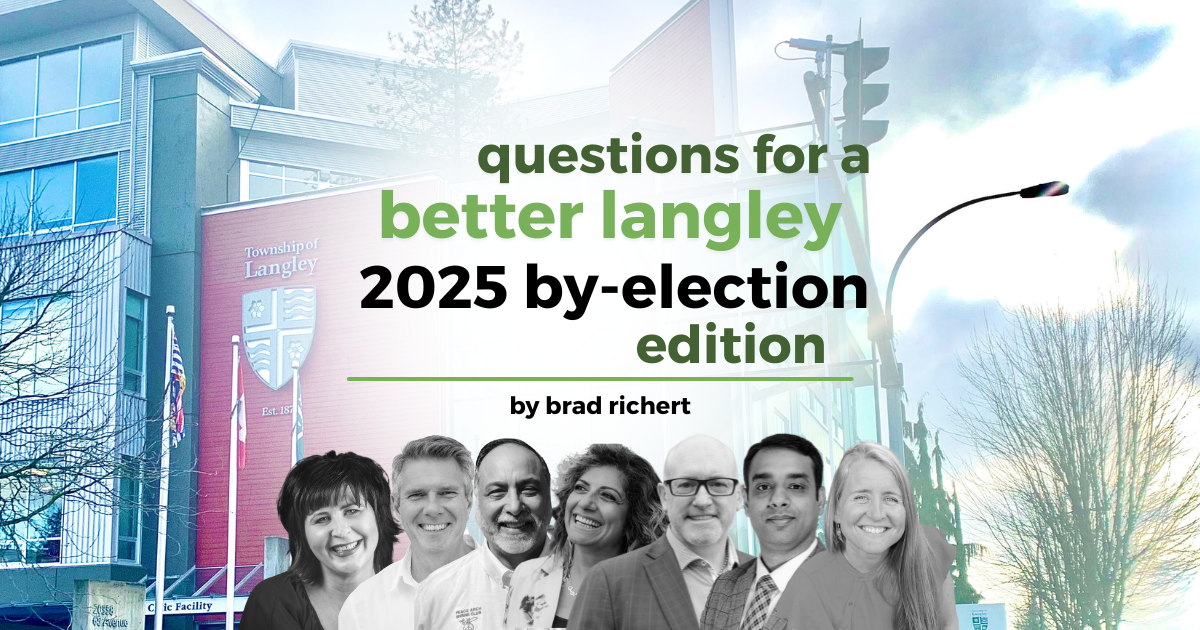










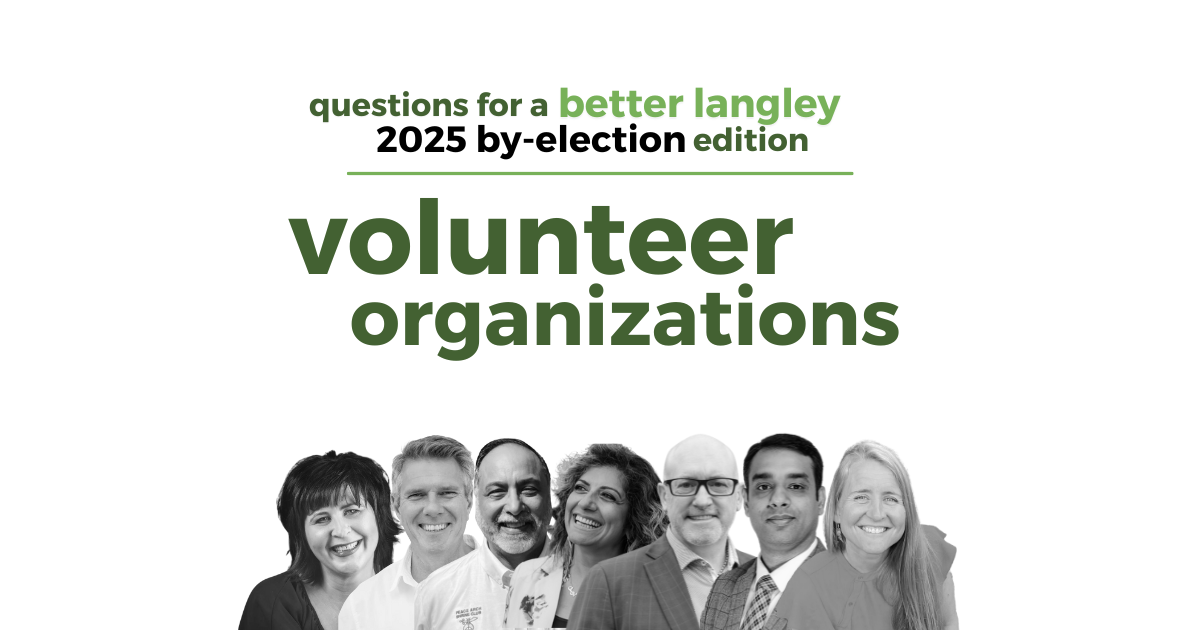
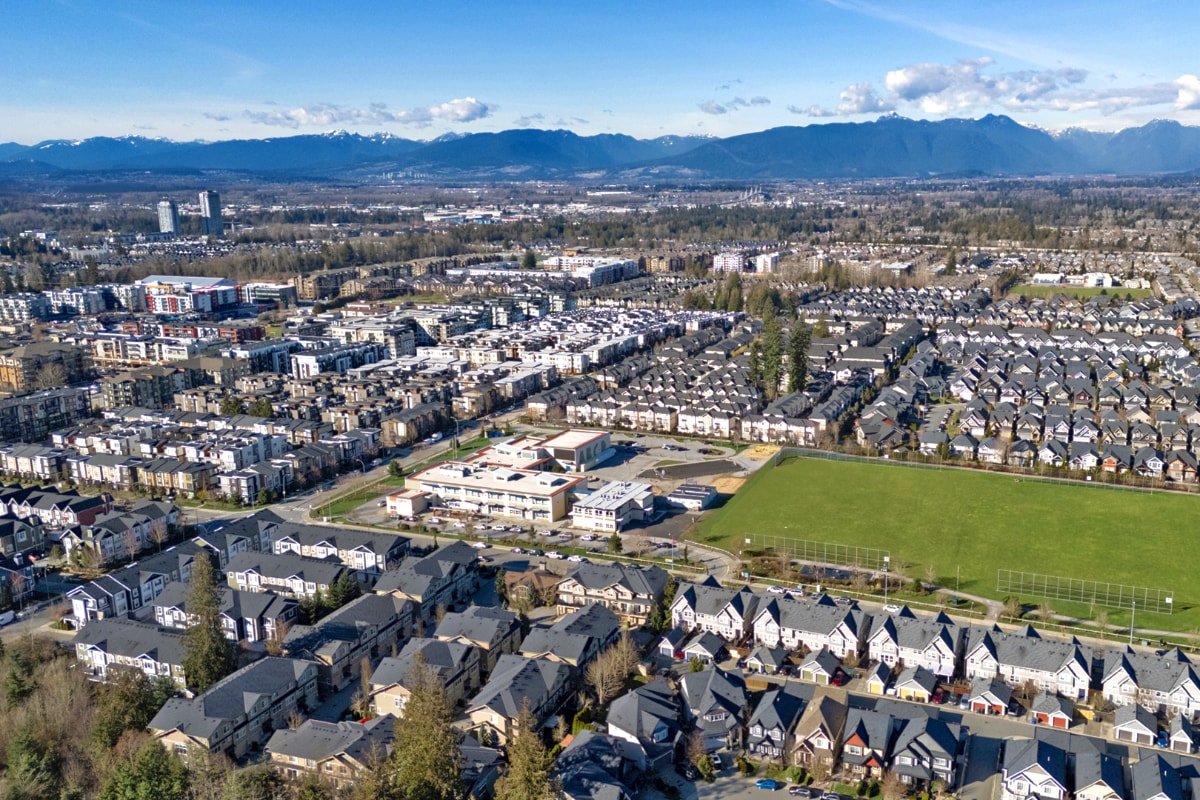
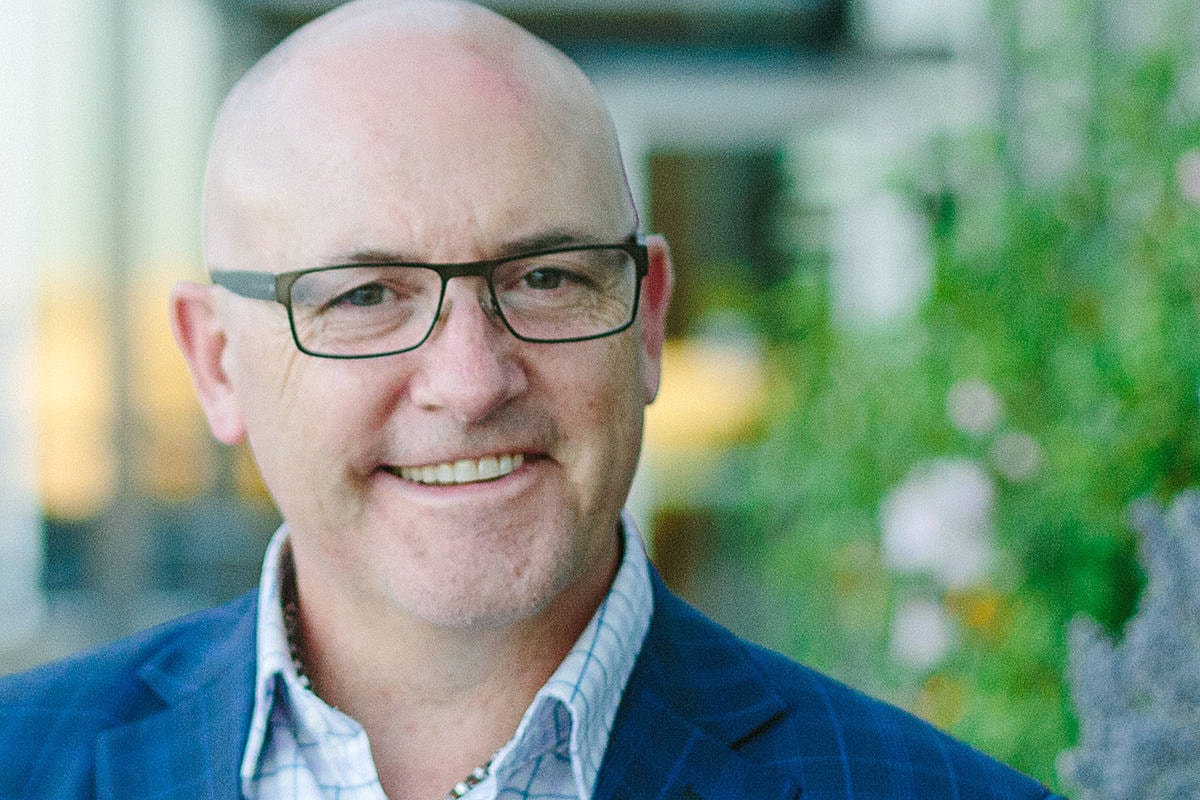
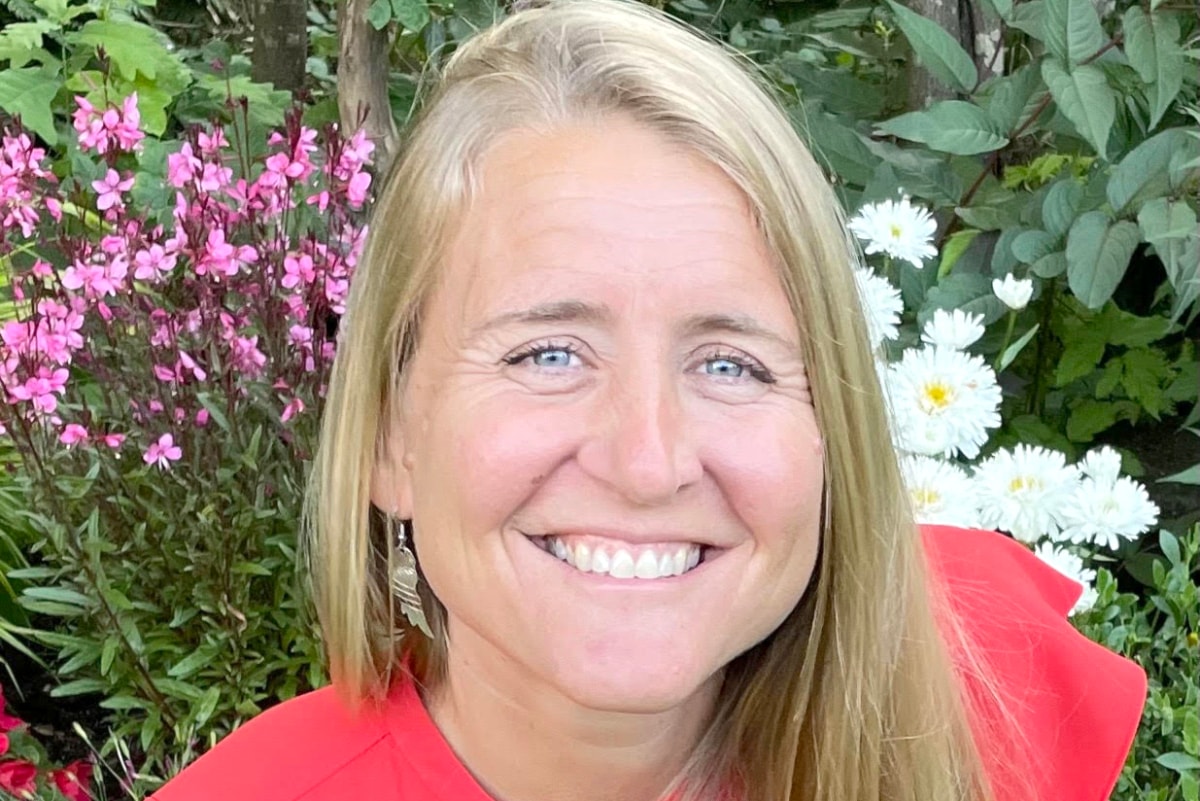



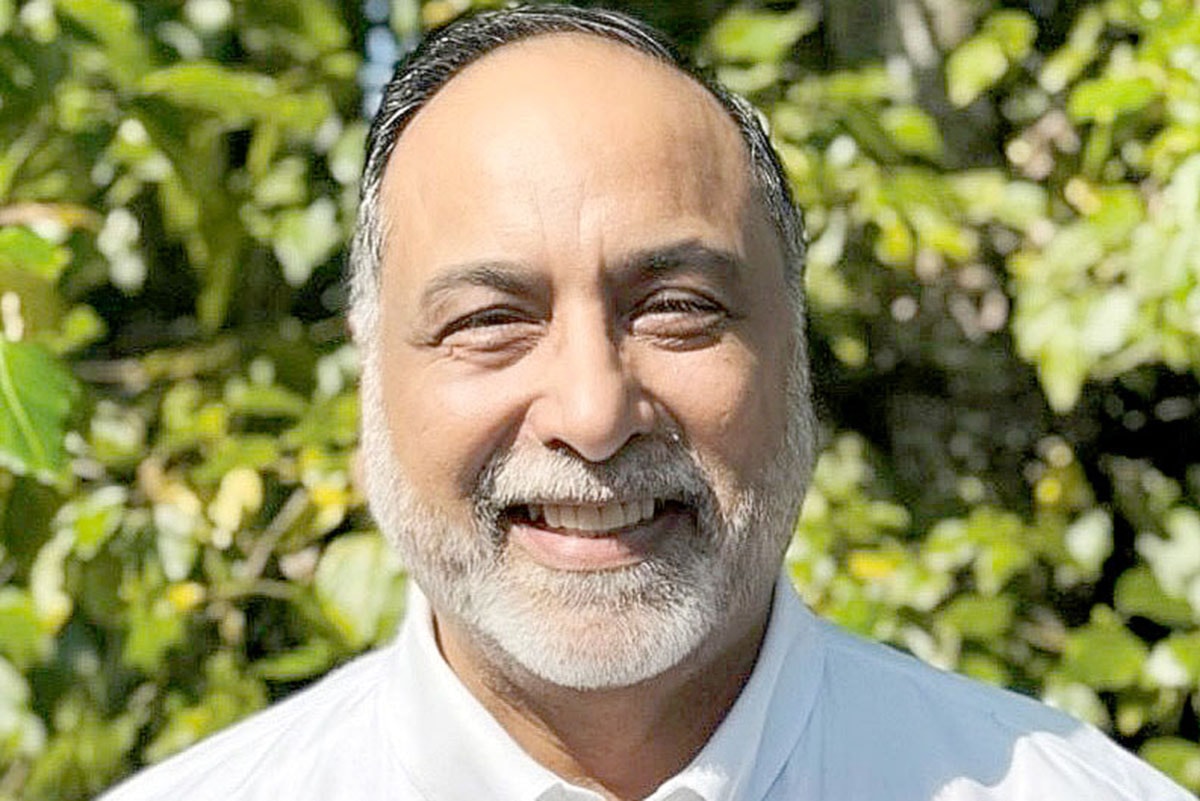
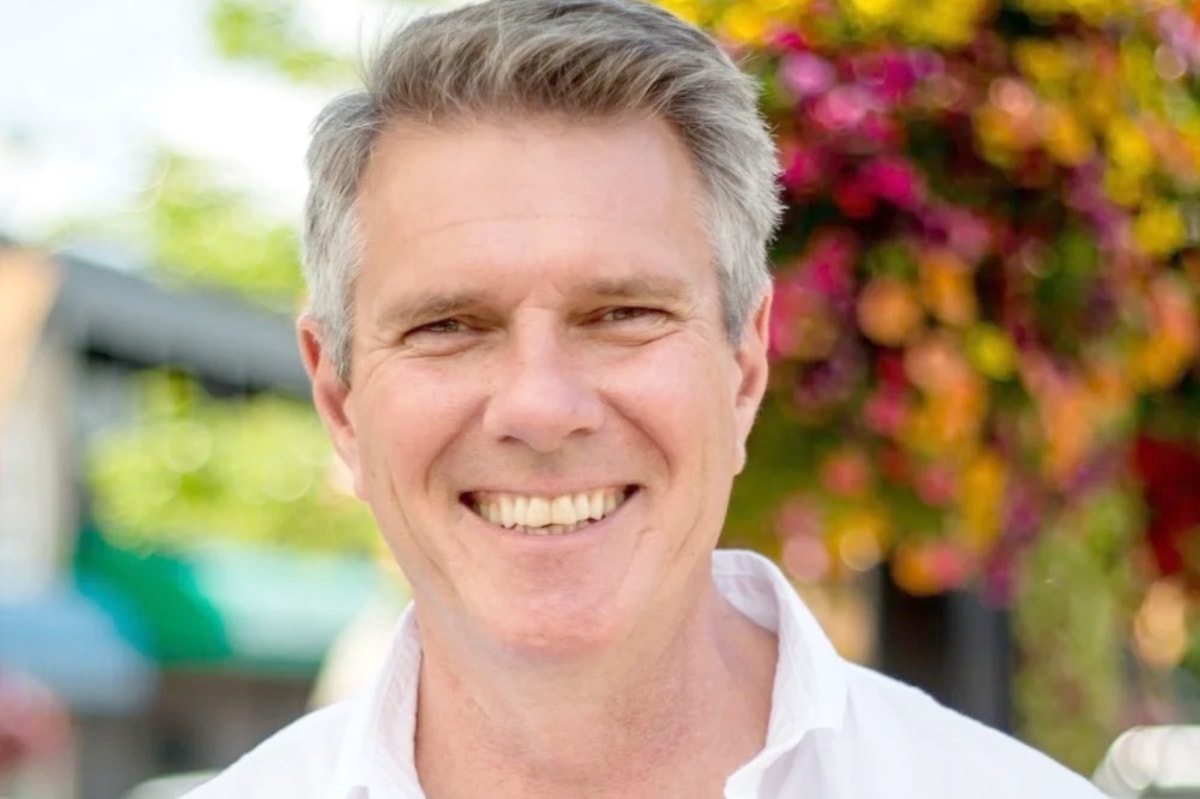
What did you think of this story?
Take our quick 2-minute survey to let us know how we're doing and what topics you'd like to see The Langley Union cover next.





















